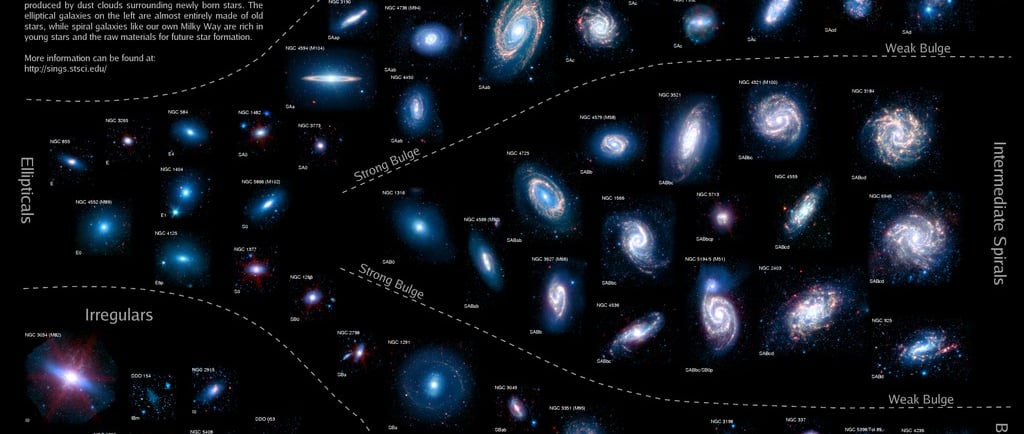The Spitzer Infrared Nearby Galaxies Survey


Introduction to the Spitzer Infrared Nearby Galaxy Survey
The Spitzer Infrared Nearby Galaxy Survey (SINGS) has provided significant insights into the properties of galaxies, particularly in the infrared spectrum. This survey observed 75 galaxies, meticulously chosen based on their representation in the Hubble Tuning Fork diagram. This diagram offers a unique way to categorize galaxies, serving as a historical benchmark in the astrophysics community.
Understanding the Hubble Tuning Fork Diagram
The Hubble Tuning Fork diagram, created by renowned astronomer Edwin Hubble, classifies galaxies into three primary categories: elliptical, spiral, and irregular. This classification system aids astronomers in studying the evolutionary progression and characteristics of galaxies over time. By situating the chosen 75 galaxies within this framework, the Spitzer survey allows researchers to examine how each category relates to its infrared emissions.
Discoveries from the Infrared Observations
The infrared observations conducted by the Spitzer Space Telescope reveal essential data about star formation, dust content, and gas distribution within these galaxies. For instance, spirals often exhibit higher star formation rates compared to ellipticals, which tend to contain older stars. The infrared survey detects heat emitted from dust, which can obscure typical optical views, thus providing a clearer understanding of star-forming regions hidden within these galaxies. Combining these infrared properties with existing classifications from the Hubble Tuning Fork diagram enriches our comprehension of galactic evolution and behavior.
Moreover, the infrared data enables scientists to trace the dust's influence on star formation and interact with other cosmic materials. This interaction could lead to insightful revelations about the life cycles of galaxies and their resultant characteristics. By recognizing correlations between dust content and the Hubble classification, astronomers can formulate more thorough models of cosmic evolution.
In conclusion, the Spitzer Infrared Nearby Galaxy Survey not only enhances our understanding of the infrared properties of 75 carefully selected galaxies but also solidifies the significance of the Hubble Tuning Fork diagram in modern astrophysical studies. As detection methods advance, the insights garnered from these infrared properties will continue to evolve, further illuminating the complex tapestry of galactic formations and transformations.
